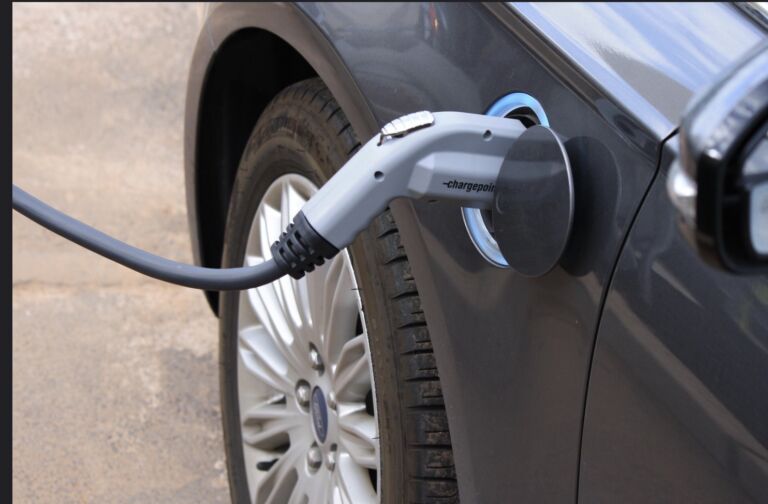Will energy mandates work?
Will energy mandates work? Carolina Journal


We are Headed into an Energy Transformation

The United States is on the brink of one of the largest transformations in its history – the energy transformation. This transformation is designed to shift our major power sources and curtail further global warming. The primary objective of this shift is to move away from fossil fuels and towards renewable energy sources.
The Focus on Transportation
The initial focus of this energy shift has been in transportation, with the objective of reducing the usage of gasoline, which is derived from oil. The federal government has implemented lavish incentives, subsidies, and new regulations to encourage the production and purchase of non-gasoline vehicles and their components.
However, some states have taken an additional step by prohibiting the sale of gasoline-powered vehicles as early as 2035. These states include California, Connecticut, Maryland, Massachusetts, New Jersey, New York, Oregon, Rhode Island, and Washington. It is expected that several more states will follow suit.
While many people support the goal of moving quickly towards a net-zero carbon future, there are concerns about whether a mandate is the best way to achieve this goal. There are several issues that suggest a mandate may not be the most effective approach.
The Role of Electric Vehicles (EVs)
Currently, the most popular type of non-gasoline vehicle is the electric vehicle (EV). Although other alternative fuel-based vehicles may be developed in the future, the energy transformation in transportation is currently centered around EVs. North Carolina is now home to an emerging EV manufacturer (VinFast) as well as two other facilities that will produce the batteries and chips needed to power EVs.
However, the use of electricity to power EVs presents a significant challenge. Electricity is not a primary power source; it is derived from various primary sources, including fossil fuels such as coal, oil, and natural gas, as well as non-fossil fuel sources like wind, solar, hydro, and nuclear energy.
The Challenges of Mandates
In order for mandates to be successful, three things must happen simultaneously. First, electricity production must increase significantly, potentially even doubling to meet the demand from emerging technologies like artificial intelligence. Second, transmission lines and electric storage capacity must be improved and expanded. And third, charging stations must be made more efficient and readily available.
Each of these goals is daunting on its own. While North Carolina is not among the states mandating an energy conversion, Duke Energy has already announced plans for increased energy output that includes both fossil-fuel-based and renewable-based production. However, there is already a vigorous debate over the role of renewables and whether their use should be significantly increased in the plan.
These challenges raise questions about the role of government in the energy transition. There is concern that government goals and requirements may outpace the private sector’s ability to deliver on those objectives. In the case of transportation, there is fear that rapid adoption of EVs without the necessary electric power and infrastructure could leave drivers stranded and harm the economy.
The Importance of Balancing Government Goals and Private Sector Realities
The last major energy transformation, from horse power to vehicle power, occurred with minimal governmental guidance or support. While many argue that the current situation involving climate change is different, it is important to consider whether government goals and private sector realities can align to achieve the desired results simultaneously. If not, there is a risk of falling short on both transportation needs and climate goals.
SDGs, Targets, and Indicators
-
SDG 7: Affordable and Clean Energy
- Target 7.2: By 2030, increase substantially the share of renewable energy in the global energy mix.
- Indicator 7.2.1: Renewable energy share in the total final energy consumption.
-
SDG 9: Industry, Innovation, and Infrastructure
- Target 9.4: By 2030, upgrade infrastructure and retrofit industries to make them sustainable, with increased resource-use efficiency and greater adoption of clean and environmentally sound technologies and industrial processes.
- Indicator 9.4.1: CO2 emission per unit of value added.
-
SDG 11: Sustainable Cities and Communities
- Target 11.6: By 2030, reduce the adverse per capita environmental impact of cities, including by paying special attention to air quality and municipal and other waste management.
- Indicator 11.6.2: Annual mean levels of fine particulate matter (e.g. PM2.5) in cities.
Analysis
1. Which SDGs are addressed or connected to the issues highlighted in the article?
The issues highlighted in the article are connected to SDG 7 (Affordable and Clean Energy), SDG 9 (Industry, Innovation, and Infrastructure), and SDG 11 (Sustainable Cities and Communities).
2. What specific targets under those SDGs can be identified based on the article’s content?
Based on the article’s content, the specific targets that can be identified are:
– Target 7.2: Increase substantially the share of renewable energy in the global energy mix.
– Target 9.4: Upgrade infrastructure and retrofit industries to make them sustainable, with increased resource-use efficiency and greater adoption of clean and environmentally sound technologies and industrial processes.
– Target 11.6: Reduce the adverse per capita environmental impact of cities, including by paying special attention to air quality and municipal and other waste management.
3. Are there any indicators mentioned or implied in the article that can be used to measure progress towards the identified targets?
Yes, there are indicators mentioned or implied in the article that can be used to measure progress towards the identified targets:
– Indicator 7.2.1: Renewable energy share in the total final energy consumption.
– Indicator 9.4.1: CO2 emission per unit of value added.
– Indicator 11.6.2: Annual mean levels of fine particulate matter (e.g. PM2.5) in cities.
Table: SDGs, Targets, and Indicators
| SDGs | Targets | Indicators |
|---|---|---|
| SDG 7: Affordable and Clean Energy | Target 7.2: By 2030, increase substantially the share of renewable energy in the global energy mix. | Indicator 7.2.1: Renewable energy share in the total final energy consumption. |
| SDG 9: Industry, Innovation, and Infrastructure | Target 9.4: By 2030, upgrade infrastructure and retrofit industries to make them sustainable, with increased resource-use efficiency and greater adoption of clean and environmentally sound technologies and industrial processes. | Indicator 9.4.1: CO2 emission per unit of value added. |
| SDG 11: Sustainable Cities and Communities | Target 11.6: By 2030, reduce the adverse per capita environmental impact of cities, including by paying special attention to air quality and municipal and other waste management. | Indicator 11.6.2: Annual mean levels of fine particulate matter (e.g. PM2.5) in cities. |
Behold! This splendid article springs forth from the wellspring of knowledge, shaped by a wondrous proprietary AI technology that delved into a vast ocean of data, illuminating the path towards the Sustainable Development Goals. Remember that all rights are reserved by SDG Investors LLC, empowering us to champion progress together.
Source: carolinajournal.com

Join us, as fellow seekers of change, on a transformative journey at https://sdgtalks.ai/welcome, where you can become a member and actively contribute to shaping a brighter future.







